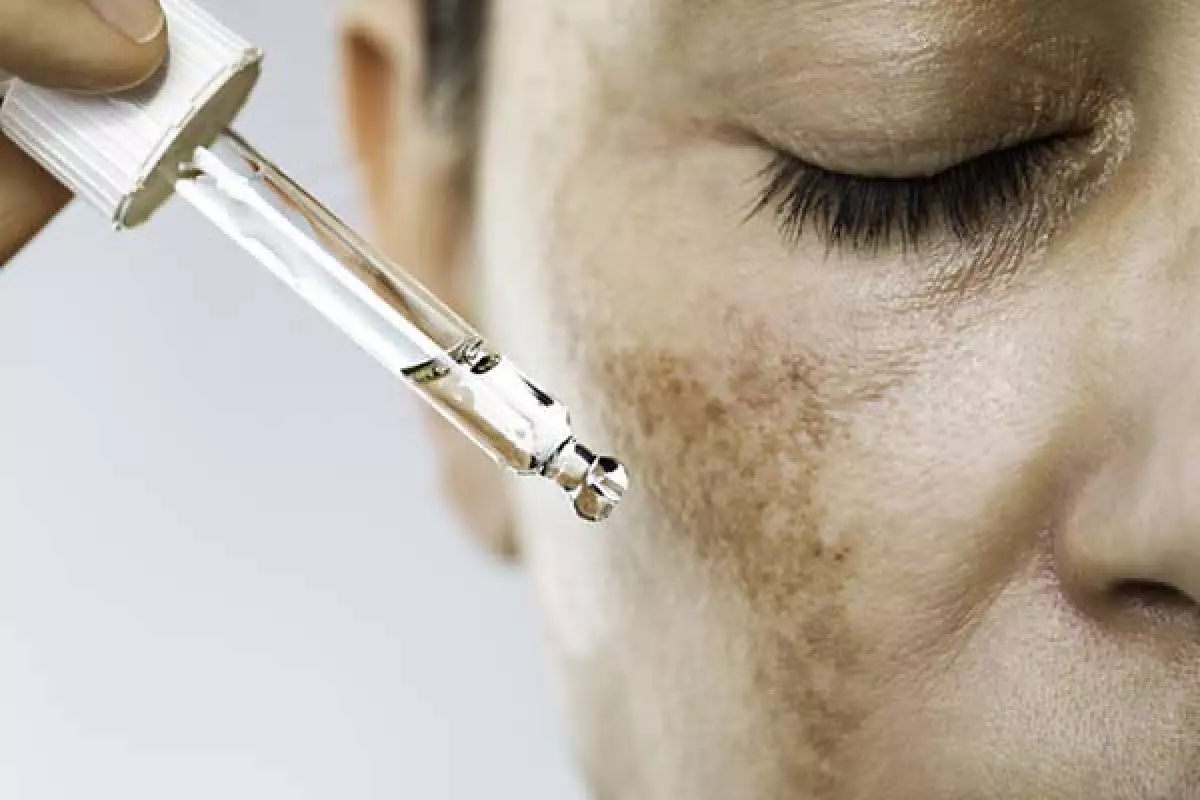
Disorders of skin darkening, also known as hyperpigmentation, are one of the most common complaints in dermatology offices. While hyperpigmentation is not harmful to your health, discoloration on the skin can be alarming and emotionally distressing.
What is Hyperpigmentation?
Hyperpigmentation refers to skin that darkens in comparison to its natural color. These patches of discoloration can develop anywhere on the skin, but are most often seen on sun-exposed areas such as the face, neck, chest, tops of the arms and hands, and shins.
Based on your skin complexion, these areas can appear brown, tan, pink, gray, black, or even purple. As opposed to a suntan, which comes and goes, hyperpigmentation tends to be more longstanding, although areas may lighten or fade with time and treatment.
Causes of Hyperpigmentation
Hyperpigmentation occurs when skin cells produce too much melanin, the protein pigment that colors our skin and hair.
This may occur due to hereditary factors, medical conditions, medications, and external influences. Common causes include:
- Sun exposure
- Genetics
- Hormonal fluctuations, such as during pregnancy
- Medications, including certain antibiotics and drugs that cause increased sensitivity to the sun
- Exposure to heavy metals, such as iron, arsenic, gold, iron, and lead
- Oral contraceptive pills
- Tobacco smoke
- Diabetes and thyroid disease
- Adrenal insufficiency, including Addison's disease, in which the body does not produce enough of the hormone cortisol
- Certain dermatological conditions, including acne and atopic dermatitis
- Skin injury or inflammation.
If you have any areas of hyperpigmentation that are more than one color, or that do not respond to treatment, make an appointment with a dermatologist. Your doctor will evaluate the site and perform a skin biopsy if necessary.
Types of Hyperpigmentation
The most common types of hyperpigmentation are harmless skin spots that can occur during childhood, pregnancy, or develop with age. Other types can be due to underlying disorders or previous skin trauma. Examples include:
- Freckles: Also called ephelides, these are small tan or brown spots that usually develop in childhood on sun-exposed skin. Freckles become darker and more numerous with time spent in the sun and heat, and usually fade during the winter months.
- Age spots (solar lentigines): These spots vary from tan to dark brown and are larger than freckles. They develop in adults due to sun exposure or previous sunburns, on areas such as the face, forearms, chest, and tops of the hands.
- Melasma: Usually occurring in females in their 20s and 30s, this condition causes irregular dark patches to occur on the face. Melasma can be caused by both sun exposure and female hormonal influences.
- Maturational hyperpigmentation: Usually affecting the sides of the face, this type of hyperpigmentation refers to gradual darkening of sun-exposed skin in people with darker skin complexions. Typically, this occurs in adulthood because of chronic sun exposure or metabolic disease.
- Periorbital hyperpigmentation: Also referred to as dark circles, this is skin darkening that occurs around the eyes.
- Acanthosis nigricans: A condition that causes darkening of the skin in areas that rub together, such as the armpits, groin, and back of the neck. This is most commonly seen in association with insulin resistance or type 2 diabetes.
- Post-inflammatory hyperpigmentation: Discoloration due to skin inflammation or injury, such as burns, wounds, acne, or skin rashes. The skin looks darker or changes in color after the lesion heals.
Hyperpigmentation of the Face: Common Areas and Triggers
The face is one of the most common areas in which hyperpigmentation occurs. The specific location depends on the type of hyperpigmentation. Common types of hyperpigmentation on the face include:
-
Melasma:
- Common areas: cheeks, upper lip, and forehead
- Triggers: sun exposure, pregnancy, and hormonal factors, including oral contraceptive pills
-
Freckles and sunspots:
- Common areas: can occur anywhere on the face
- Triggers: sun exposure
-
Maturational hyperpigmentation:
- Common areas: sides of the face
- Triggers: aging, sun exposure, genetic influences, and metabolic disease
-
Periorbital hyperpigmentation:
- Common areas: upper and lower eyelids
- Triggers: sun exposure, genetic factors, certain drugs, and hormonal causes
-
Post-inflammatory hyperpigmentation:
- Common areas: can occur anywhere on the face, but if due to acne, more common on the cheeks, chin, and forehead
- Triggers: acne, sunburns, skin rashes
Home Remedies to Combat Hyperpigmentation
Topical therapies (creams and lotions applied to the skin) are the most common treatment option for hyperpigmentation. Combination therapy, in which multiple topical treatments are used together, is usually most effective in treating hyperpigmentation.
The most common cause of hyperpigmentation is sun exposure. The body darkens the skin to protect it from harmful ultraviolet radiation. Therefore, the best preventative treatment for hyperpigmentation is daily use of sunscreen and sun-protective clothing.
Other over-the-counter topical remedies include:
- Retinol-based skin care products
- Azelaic acid gel
- Vitamin C
- Vitamin B3 (niacinamide)
- Kojic acid
- Salicylic acid
- Glycolic acid
- Thiamidol
- Arbutin
- Tranexamic acid.
Certain vitamins and antioxidants can also be helpful for hyperpigmentation. These include vitamins A, B, C, and E, obtained either from food or supplements. Natural oils including rosehip, jojoba, and argan oil, and extracts including turmeric, green tea, licorice, and mulberry, may help with skin brightening and inflammation.
Other treatment options include:
- Prescription lightening creams containing hydroquinone, tranexamic acid, tretinoin, topical steroids, or a combination of these ingredients
- Chemical peels
- Laser therapies
- Microneedling.
Contact your doctor before beginning any new medication or treatment. If your hyperpigmentation is due to a medical condition, your doctor may be able to prescribe medications to help. If you are pregnant, discuss pregnancy-safe treatment options with your doctor.

















